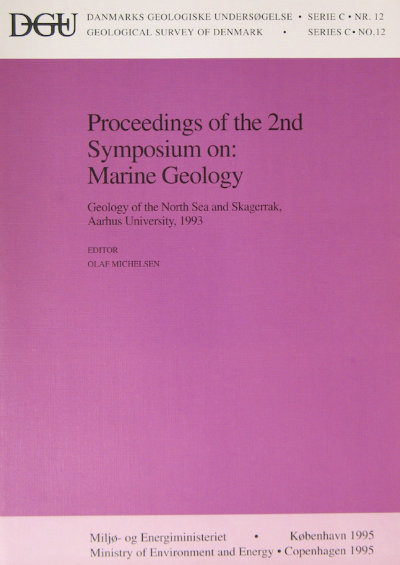Mid-Miocene progradational barrier island and back-barrier deposits, central Jylland, Denmark
DOI:
https://doi.org/10.34194/seriec.v12.7107Abstract
This paper reports on a c. 15 m thick section of marine, coastal sand, that combine a hitherto less described fades succession transitional to the Miocene fluvio-deltaic and open marine deposits. The section is exposed in a pit located 10 km northeast of the sandy fluvio-deltaic brown coal bearing strata of the Søby-Fasterholt area, known as the Odderup Formation (Middle Miocene). The section comprises more than 6 m of trough cross-stratified, low-angle cross-stratified and parallel-laminated, sand and gravel, deposited on the foreshore and backshore of a barrier island. Locally these deposits are eroded by a steepsided washover channel with a sandy fill. The overlying back-barrier deposits are up to 9 m thick, and are initiated by a thin bituminous mud bed with a mixture of terrigeneous and marine organic matter. Above, a series of 0.2-2 m thick beds of tangential to sigmoidal cross-stratified sand, often with well preserved topsets, are deposited. These beds are interbedded with ripple-laminated and parallel-laminated sand. Burrows of Ophiomorpha, possibly Skolithos and Arenicolithes occur in the back-barrier deposits and in the top of the washover channel-fill. The succession of well-preserved coastal fades-belts indicates that the depositional area was characterized by a large sediment supply in combination with a rising sea-level. The section was probably formed fairly rapidly during a coastal progradation more or less contemporaneously with the general transgression that led to the deposition of the brackish- marine Hodde Formation and later the fully marine Gram Formation.
Downloads
Published
Issue
Section
License
This article is distributed under a CC-BY 4.0 licence, permitting free redistribution and reproduction for any purpose, even commercial, provided proper citation of the original work. Author(s) retain copyright over the article contents.


